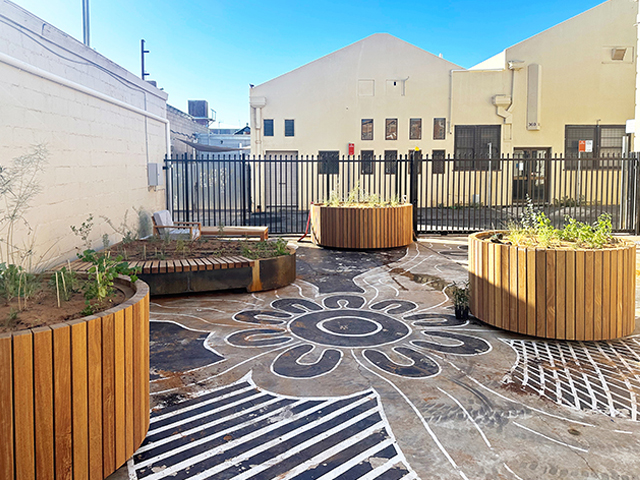WHICH SEAT BATTEN MATERIAL GETS HOTTEST IN SUMMER?
05 Sep 2019
Timber, aluminium, metal? The answer may surprise you. Read Street Furniture Australia’s report to discover which seat battens are more affected by the heat of the sun so that you can prepare your outdoor furniture for the upcoming summer season.

Comfort sitting outdoors can depend on many factors: position, view, shelter, microclimate, social comfort and more (see the Gehl cheatsheet on how to optimise positioning seats in the city).
The temperature of a seat is a significant contributing factor to outdoor seating comfort.
Metal is commonly thought to be the hottest material in summer and coldest in winter. In order to discover the truth behind this assumption, Street Furniture Australia’s inhouse engineers ran a study, dubbed the Goldilocks Batten Project, to get to the truth.
Access the full Goldilocks Report here (730KB).
The team tested anodised, powdercoated and woodgrain aluminium, and oiled hardwood (Jarrah) battens. For comparison, they also looked at raw aluminium – a material Street Furniture Australia does not use in its seats.
The battens were placed in the sun and the temperature recorded regularly. The engineers noted how long it took the material to heat up or cool down, in full sun and with clouds. 
Results from one of many batten temperature studies by the in-house engineering team
WHICH SEAT BATTEN GETS HOTTEST AND WHICH FEELS HOTTEST?
The batten that feels hottest in a blind test is NOT the batten with the highest recorded temperature on a sunny day.
Anodised aluminium was 10°C cooler than oiled timber | There is a common misperception that anodised aluminium is very hot in summer. The study showed that it is actually cooler than oiled hardwood, making it great for coastal locations, but should be avoided for colder climates.
Oiled hardwood battens reach the highest temperature | This is due to oil causing the material to store heat. Regular oiling is recommended for seats with this material as it improves durability.
Aluminium still FEELS hotter than wood | Metal has higher conductivity to skin. Raw aluminium gets hotter than anodised.
Woodgrain and powdercoated aluminium reached higher temperatures than anodised aluminium | The extra layer insulates the material. A thick powdercoat can provide conductivity levels similar to timber, so it will feel cooler than raw aluminium.
Applying white powdercoat or white paint will raise emissivity | Light-coloured materials do not store as much heat, making them a better option for spaces that are prone to sun exposure. 
Anodised aluminium battens do not get as hot as timber and work well in seaside locations
WHAT MAKES BATTENS HOT?
Three main factors determine how responsive battens are to heat:
- Thermal Mass | How much heat, energy and time it takes to change temperature. High mass is best for battens as they will heat and cool slowly.
- Radiation Emissivity | How much energy absorbed from the sun is emitted out or stored within. Battens that store heat feel hot, so higher is better.
- Conductivity | How fast heat is transferred from the surface of the metal to skin.
Hardwood battens have the highest thermal mass of materials tested as they change temperature most slowly. They are solid, while aluminium feature hollow extrusions. During the tests where wind blew across aluminium extrusions, the metal cooled quickly. 
Winter in Woden Town Square, Canberra, before the Woden Experiment activation
PSYCHOLOGICAL EFFECTS OF STREET FURNITURE
The Street Furniture Australia team – with more than 30 years of experience supplying furniture to public spaces – notes that the comfort people experience from different kinds of battens on seats is also affected by psychological factors.
- Looks matter | Timber and woodgrain aluminium tend to look warmer and more inviting to the public, encouraging them to be used as they wait for transport or relax in the park.
- Colour choice may help overcome perceptions | Using warmer colours in the future can provide a psychological ‘warming’ effect if the area is prone to a cold climate.
- The shinier a material is, the hotter or colder it looks.
- People dress for the weather | Bare skin does not usually come in contact with a bench in winter.

After the Woden Experiment Activation | Colourful furniture from Street Furniture Australia helps the space feel ‘warmer’
WHICH BATTEN SHOULD YOU CHOOSE?
If heat is a concern, anodised aluminium will not get as hot and will cool more quickly with cloud cover, wind or moving shade.
When designing for colder climates, timber materials and colourful palettes can make environments more inviting for the public.
Street Furniture Australia’s materials and finishes are suitable for all-weather conditions. By taking advantage of the customisable options available, you can optimise comfort to create an inviting public space for the community.
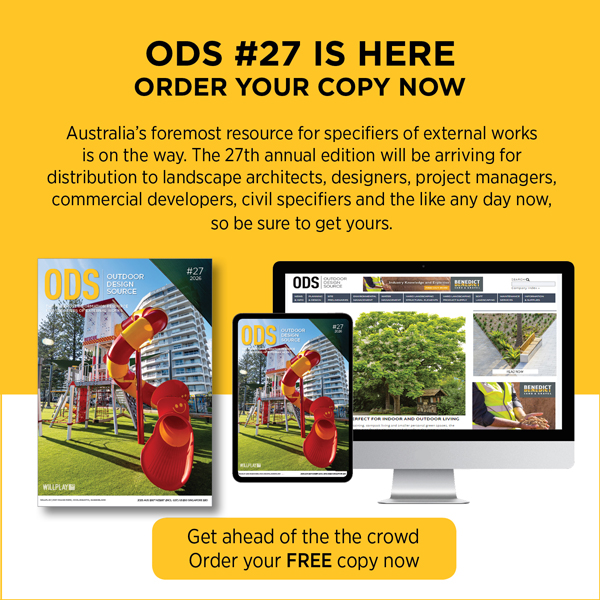
MORE NEWS
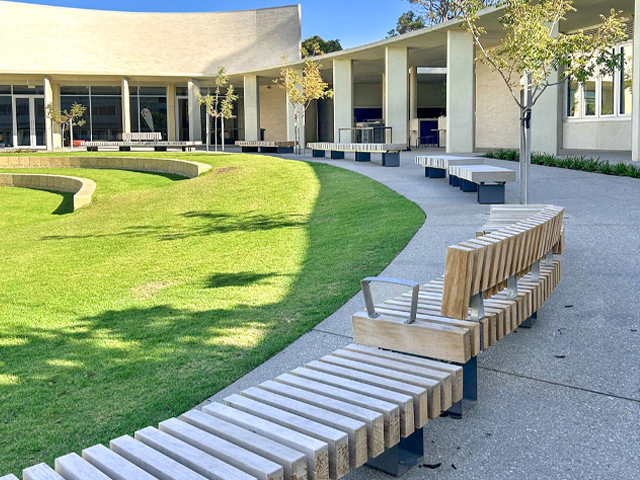
PLAYFUL DESIGN AND NATURAL STYLE FURNITURE TRANSFORM HALE SCHOOL, PERTH
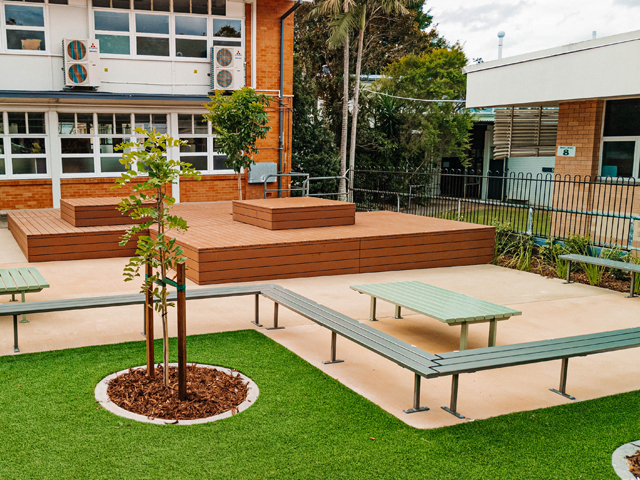
RETHINK THE CLASSROOM: OUTDOOR FURNITURE THAT ELEVATES LEARNING
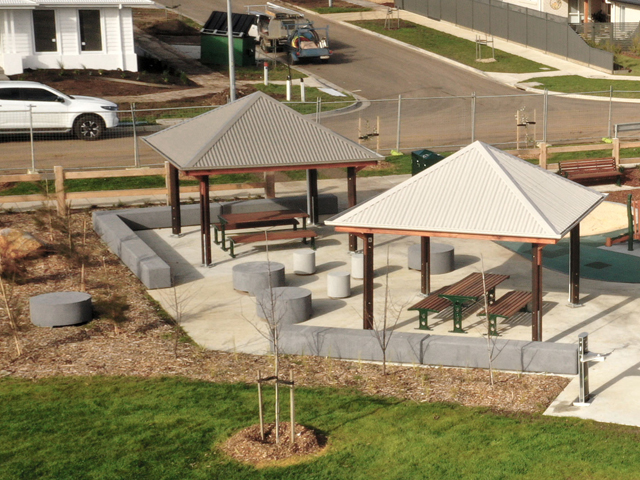
A VERSATILE OUTDOOR FURNITURE CATALOGUE FOR ANY PUBLIC SPACE
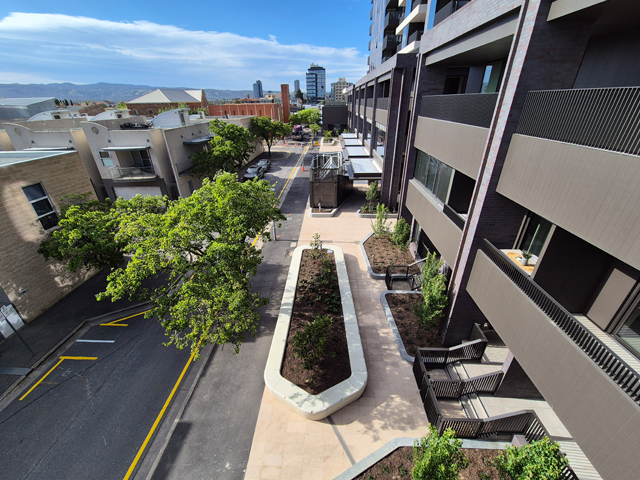
CRAFTING CONNECTION AT 88 O'CONNELL
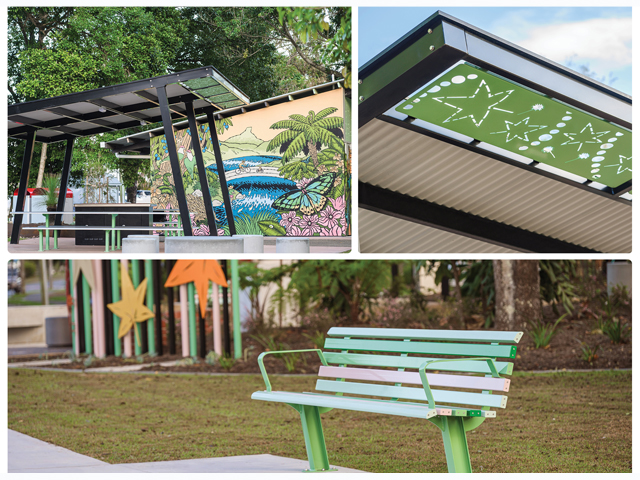
WHAT GOOD DESIGN LOOKS LIKE AFTER FLOODS
